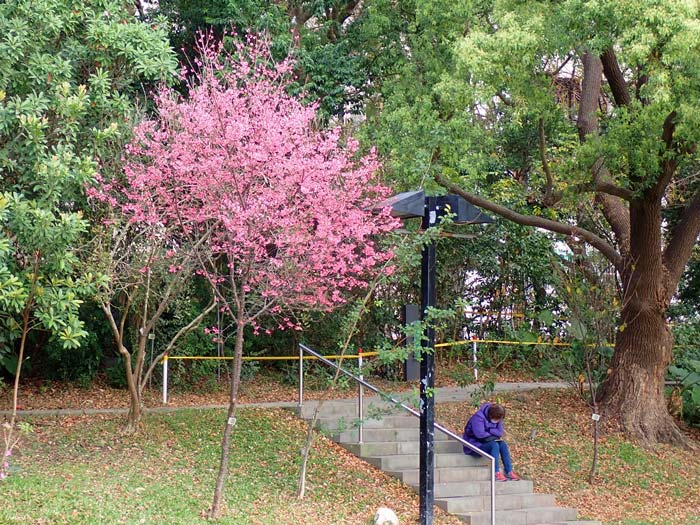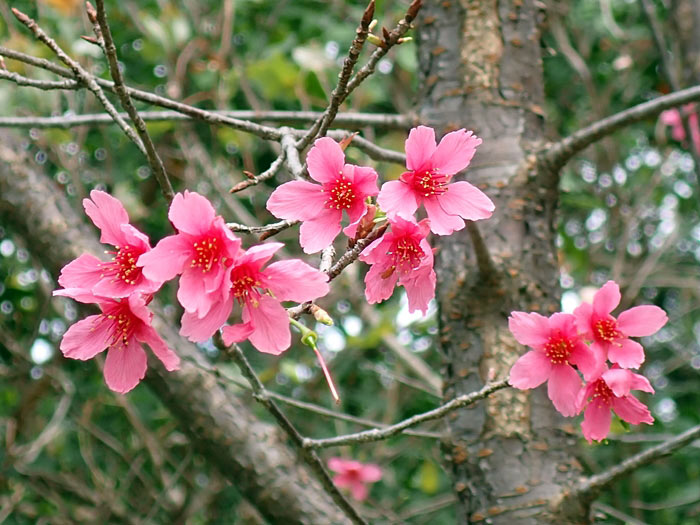Prunus campanulata
In Taiwan, blossom viewing in spring has become an important cultural activity, and one of the most popular is the cherry blossom, under which people gather, take photos, enjoy tea, and share a beautiful time. This activity not only brings people close to nature, but also carries rich cultural meaning and promotes social interaction and emotional exchange. In 2011, the cherry blossom was voted by the public as the city flower of Taichung, where the museum is located.
The Taiwan cherry is a deciduous tree with a straight trunk and dark brown metallic bark, making it easy to distinguish from other trees. The leaves fall during the low temperature period every year, and the flowers bloom from January to March of the next year, and it is only after the flowers have finished that the leaves begin to grow. The pedicels are long and thin, with the flowers drooping and opening towards the ground. The ovoid fruits are dark red when ripe and are edible.
The cherry blossom has always been a symbol of beauty and spring. Most cherry blossom species prefer cooler environments. Among the many cherry blossom species and varieties, the Taiwan cherry is particularly special because it can adapt to the warm climate of lowlands in Taiwan. The Taiwan cherry is a native species of Taiwan, and it is also found in Japan, China and Vietnam. It grows in low and mid-altitude broadleaf forests from 300 to 1,800 meters above sea level throughout the island, and is more common in the north and central parts of the island. Due to artificial cultivation, it is commonly used in urban areas and low-altitude mountainous landscapes. The Taiwan cherry trees are planted in the Central Lowland Area and the Northern Lowland Area of the Botanical Garden.
To enable more people to appreciate the beauty of Taiwan cherry blossoms, agricultural organizations have been actively involved in research and cultivation in recent years, not only improving Taiwan cherry varieties, but also developing a number of new varieties to adapt to different environments and needs. For example, some new varieties have a longer flowering period and brighter flower colors, while others are more resistant to high temperatures or diseases. These efforts have not only enhanced the ornamental value of the Taiwan cherry, but also demonstrated the progress of agricultural technology in Taiwan.

